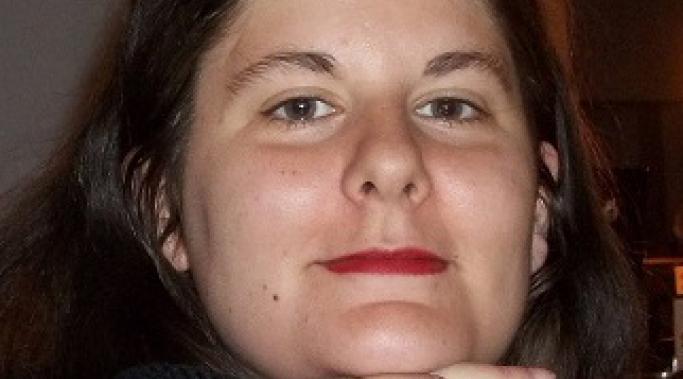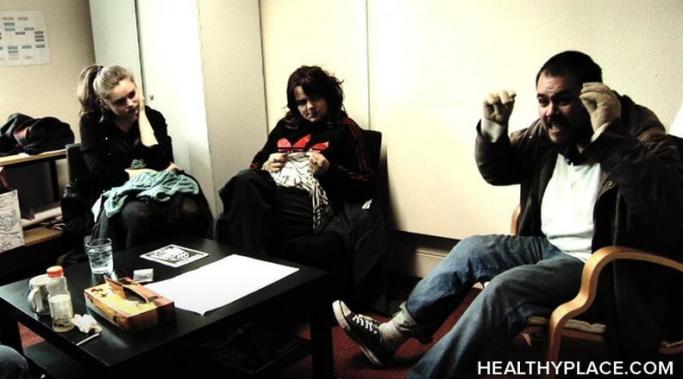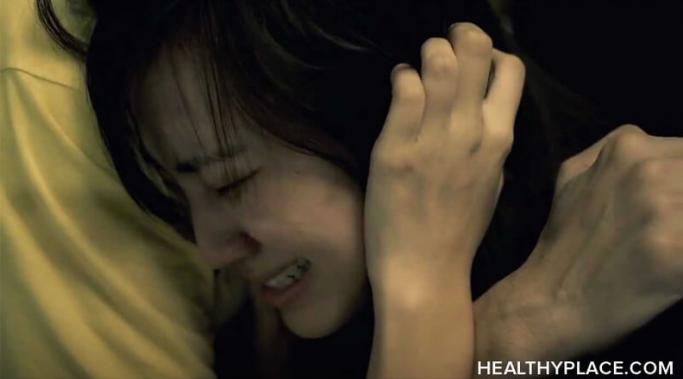Before I started taking antipsychotics, I was always really skinny -- I had never weighed more than 105 pounds in my 19 years of life. It was part of my identity. So was being eccentric -- a lot of my identity revolved around being what would now be called the manic pixie dream girl. In case you haven't heard of this particular dream girl, think of Zooey Deschanel or Kate Hudson in "Almost Famous." Pretty and petite, yet whimsical and quirky. But now I deal with schizoaffective disorder and weight gain.
Creative Schizophrenia
I have been diagnosed with schizoaffective disorder. But that wasn’t always the case. I was originally diagnosed with schizophrenia. So what does it mean to have schizoaffective disorder versus schizophrenia? For me, it’s meant a long learning curve that was frightening, confusing and reeling in meds changes. My doctor now focuses on symptoms rather than a hard and fast diagnosis. Still, some understanding the differences between schizophrenia and schizoaffective disorder is helpful to me and my family.
I have schizoaffective disorder and I hear voices. The first time I heard them 16 years ago, I thought they were faeries. Sometimes I still think that. Faeries are troublemakers. So are my voices.
My name is Elizabeth Caudy. When I was little, I always knew my uncle was different. As I grew older, I was able to grasp that he had schizophrenia. Since I knew schizophrenia ran in families, I was always afraid that I would become schizophrenic. And I did.
Under the spell of delusions and psychosis, many of us have tread the trenches of homelessness. We are fighting a battle on multiple fronts, from the horrifying symptoms that we suffer from, to the poverty and intense stigma that often follows. These varying aspects of schizophrenia can combine together to form nightmare scenarios where we are left confused, alone and living on the streets. Once homeless and ill, we face a new set of problems that include hypothermia, starvation, victimization and lack of medical care. When this situation arises, we can become desperate and go to extreme lengths to meet our basic needs.
Opening a book entitled Psychos on a Saturday evening in the bargain section of a local bookstore, I came across the rantings of an author that symbolizes the hatred and stigma that people with schizophrenia often face. The defining characteristic of the psychotic, according to this New York Times bestselling author, is a "lack of empathy" followed by deranged criminal behavior. This fundamental and obvious flaw into the nature of the psychotic is still perpetuated to the public, by authors with an abundance of both influence and ignorance.
Schizophrenia is an illness that causes intense pain and distress for its victims. In our suffering, we can seek solace and relief in ways that can worsen our symptoms. Some of us will turn towards drugs and alcohol in a desperate attempt to dull our pain. I, myself, was one of those individuals. Initially, I used alcohol as a way to cope with the pain that I experienced due to my schizophrenia symptoms. This temporary relief came at a great cost, however. Inevitably my illness worsened and my path towards recovery became more difficult.
Schizophrenia is a disease that affects our perception in ways that are unimaginable to most. Deep within the schizophrenic mind are a plethora of villains that haunt us our every waking hour. At one time I believed that these villains physically existed and would bring about my inevitable, torturous death. They stalked me, haunted me, and watched my every move all the time. They knew my thoughts, actions, whereabouts, and movements. They could manipulate my emotions and thoughts at will. I could even sometimes hear them. They would speak to me in angry, torturous ways.
In this article, I will introduce you to several of these villains. Some of them are human while others are not. Though none of them exist, all of them were capable of inflicting indescribable pain upon me. These are the villains of schizophrenia.
Within the psychotic mind lies a mysterious place filled with voices and shadowy figures. Therein lies persecution and horror of otherworldly origin. What is it that brings this terror to us? Schizophrenia is a disease that is toxic to our minds, and brings on unusual beliefs and behaviors. An extension of these beliefs are dark, eerie voices from unseen places. These voices come from various origins and seem to have a conscious of their own. How is it that our minds can hear voices from nothingness? Is this a cruel trick of nature? How can a disease be so bizarre and menacing? The voices can unfold in different ways. For me, the beliefs and voices are one and the same. They mesh together to create a woven pattern of unreality, both tortuous and unseen.
Hallucinations are a prominent feature in many people who suffer from paranoid schizophrenia. Many of us will experience visual, tactile and auditory hallucinations during some period of our illness. The most common of these, and the only I have experienced, are auditory hallucinations. Hearing voices is extremely common for people with paranoid schizophrenia, and can be a terrifying and degrading experience for the sufferer.









